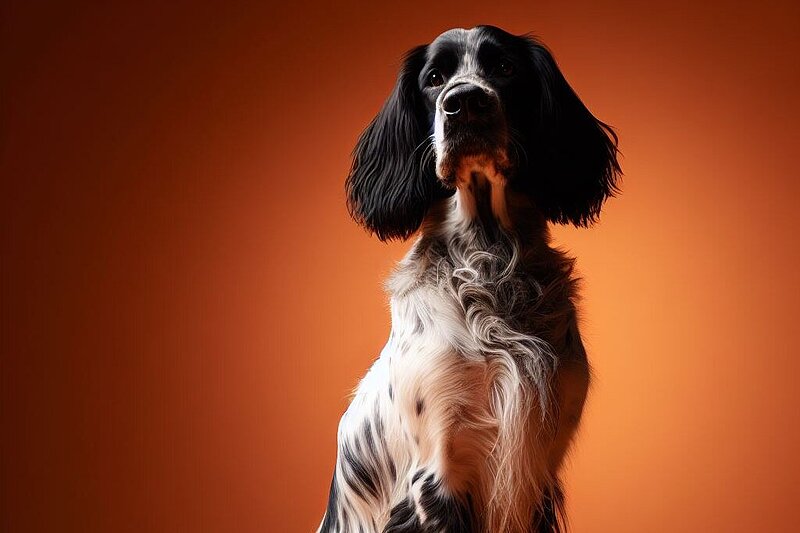English Setter: The aristocrat among the dogs
The fascinating history of the English Setter
The roots of the English Setter go back to the 14th century, when ancestors of the breed were already used for hunting birds. In the 19th century, the breed was further developed and refined by Edward Laverack and Purcell Llewellin. Laverack laid the foundations for the modern English Setter, while Llewellin bred a line of Setters specifically suited to field work. These two lines formed the basis for today's breed, which has gained worldwide recognition.
Who is the English Setter suitable for?
The English Setter is an ideal companion for active families who spend a lot of time outdoors. This breed loves exercise and is particularly happy when it can go for long walks, hikes or other outdoor activities. Dog sports such as agility or obedience are also excellent ways to challenge and encourage the intelligent and eager-to-learn Setter.
Character and behavior: Gentle and friendly
The English Setter is known for its gentle and friendly character. These dogs are very people-oriented and build a close bond with their owners. They are patient and affectionate with children and generally get on well with other pets. The English Setter is a social dog that loves company and does not like to be left alone.
Appearance: elegance and grace
The English Setter impresses with its elegant appearance. It has a long, silky coat that can come in a variety of colors, including orange belton, blue belton, lemon belton and tricolor. The characteristic long ears and soft, expressive eyes give him a noble appearance. Males reach a shoulder height of around 65 to 68 cm and weigh between 25 and 36 kg, while females are somewhat smaller and lighter.
Care and health: tips for a long and healthy life
Grooming the English Setter requires regular attention, especially due to its long coat. It should be brushed thoroughly at least once a week to prevent matting and keep the coat clean and healthy. Regular ear cleaning is also important as the long ears can be prone to infection. Claws should be clipped if necessary and dental care should not be neglected either.
The English Setter is generally a robust and healthy breed, but can be prone to certain genetic conditions such as hip dysplasia and deafness. Regular veterinary examinations and a balanced diet are essential to maintain the dog's health.
Exercise requirements: Active and full of energy
English Setters are energetic dogs that need a lot of exercise. They are not typical apartment dogs and feel most at home in a house with a garden or in a rural environment. Daily long walks and sufficient mental activity are essential to keep the Setter happy and balanced. An underchallenged setter can quickly develop behavioral problems.
Training recommendations: Patience and consistency
Training an English Setter requires patience and consistency. These dogs are intelligent and eager to learn, but can also have a mind of their own. Positive reinforcement and gentle but consistent training methods are the key to success. Attending a dog training school can be helpful to reinforce the basics of training and to encourage the Setter socially.
Behavior with children and other animals
The English Setter is known for its loving and patient nature, which makes it an ideal family dog. It gets on well with children and can be an excellent playmate. It also generally gets on well with other pets, provided it has been socialized early on. His gentle nature and tolerance make him a pleasant companion for all family members.
Recognition and interesting facts
The English Setter is recognized by the Fédération Cynologique Internationale (FCI) and belongs to Group 7, the pointing dogs. This breed is not only an excellent hunting dog, but has also made a name for itself in dog shows and dog sports. Their versatility and friendly nature make them a popular choice for dog lovers worldwide.
